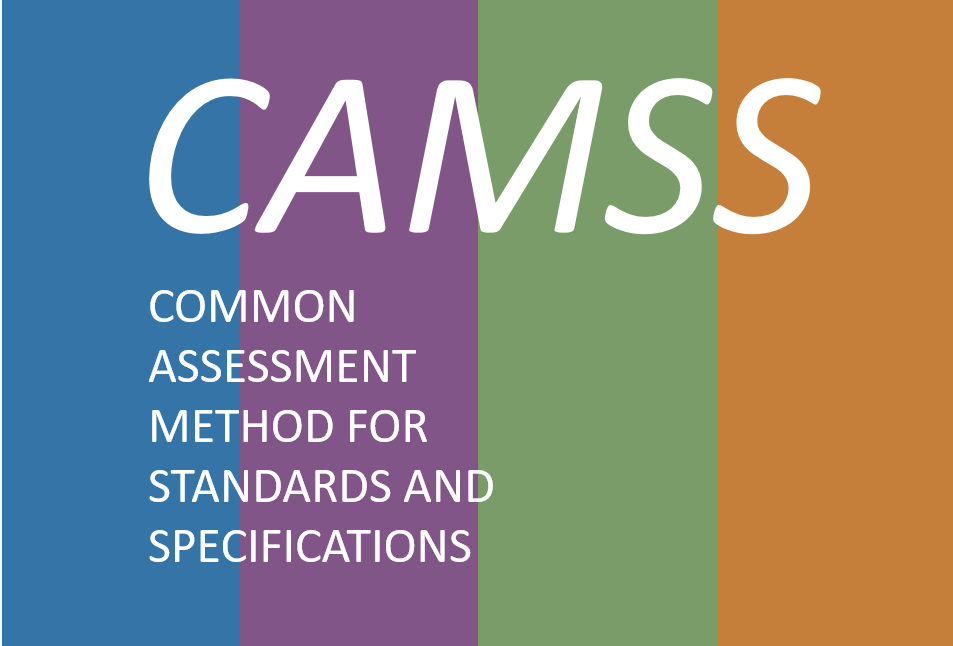Achieving a modern ICT standardisation policy

2016.27 CAMSS - Common Assessment Method Standards and Specifications
You want to use ICT standards or specifications in procuring and implementing your regional, national or cross border ICT services. You would like to make sure that you choose the best available ICT standards or specifications to fulfill your business needs. CAMSS will provide you with a comprehensive method to help you in the assessment of ICT standards and specifications.
What is this action about?
The assessment of standards and specifications for eGovernment solutions is currently organised on a national basis, e.g. within the context of Member States’ National Interoperability Frameworks.
"CAMSS" is an initiative to promote collaboration between EU Member States in defining a "Common Assessment Method for Standards and Specifications" and to share with other countries the assessment study results for the development of eGovernment services.
In this way interoperability between EU Member States in the area of eGovernment will be expanded through the sharing of information and knowledge, the alignment of national processes and by reusing best practices. It will also speed up the assessment processes and reduce their cost throughout European public administrations.
The use of the CAMSS by Member States will help promote transparency in the choice of eGovernment solutions and standards. It should also lead to a more efficient use of public funds via sharing and reuse among eGovernment projects.
Other benefits include less duplication of efforts and improved efficiency and expertise.
What are the objectives?
Establishing and maintaining a framework for assessing interoperability standards and specifications.
The framework will:
- provide European administrations with a well-defined and easy-to-use framework and method for assessing ICT interoperability standards and specifications;
- the framework will ensure that assessments of ICT standards and specifications can be made faster, easier and with higher quality;
- nable the reuse, in whole or in part, of such assessments.
What are the benefits?
- Ensuring greater transparency throughout the selection of standards in the context of ICT strategies, architectures and interoperability frameworks through a commonly agreed assessment method, assessment process and a list of assessment attributes.
- Reducing resource and time requirements and avoiding duplication of efforts. (Partial) sharing of finalised assessments of standards and specifications.
- Enabling easier and faster assessments and a common library for standards means greater efficiency and cost savings as well as enhancing expertise of civil servants evaluating standards and specifications.
What has been already achieved?
In 2017:
- The CAMSS action established the first service in ISA², CAMSS as a Service (CAMSSaaS), which allows its users to request assessments of standards and technical specifications executed by the CAMSS Team on demand. The provision of the service has been continuous since it was established, delivering assessments for Spain and the Netherlands, among others.
In 2018:
- CAMSS was institutionalised as part of the Multi Stakeholder Platform’s Streamlined Process, which is in charge of the evaluation of standards and technical specifications proposed for their identification as fit for the use in public procurement.
- CAMSS has become responsible for the EIRA Library of Interoperability Specifications (ELIS), which is a component of EIRA consisting of a library containing the interoperability specifications that will be used in the EIRA architecture.
In 2019:
- Spectacular consolidated recognition of the value of the action.
- The MSP board approved in January the institutionalization of CAMSS in the process of identification/evaluation of standards for the EU Catalogue of standards for ICT procurement.
- Core Interoperability Standards and Specifications Vocabulary (beta), CISSV, reviewed and with positive comments by the NATO standards group.
- High-Level requirements for the EIRA Library of Interoperability Specifications delivered to the EIRA team to be implemented in the CarTool.
- 5 new assessments published in the repository.
What are the next steps?
In 2020, the action aims to:
- Continue populating the assessment library, supporting the Member States to run or map to CAMSS assessments of standards, and animate the Joinup CAMSS community.
- Maintain and update the CAMSS method and tools.
- Increase the value of EIRA by providing a library of interoperability specifications for the EIRA architecture building blocks based on standards who support EIF.
- Position CAMSS-EIRA along the EU Catalogue of ICT standards for procurement in public tendering in the European Public Administrations.
- Develop the Core Standards and Specifications Vocabulary, CISSV, and Core Assessment Vocabulary (Public consultation included).
- Support the SDG with the deployment of CAMSS in MS and in events/conferences.

